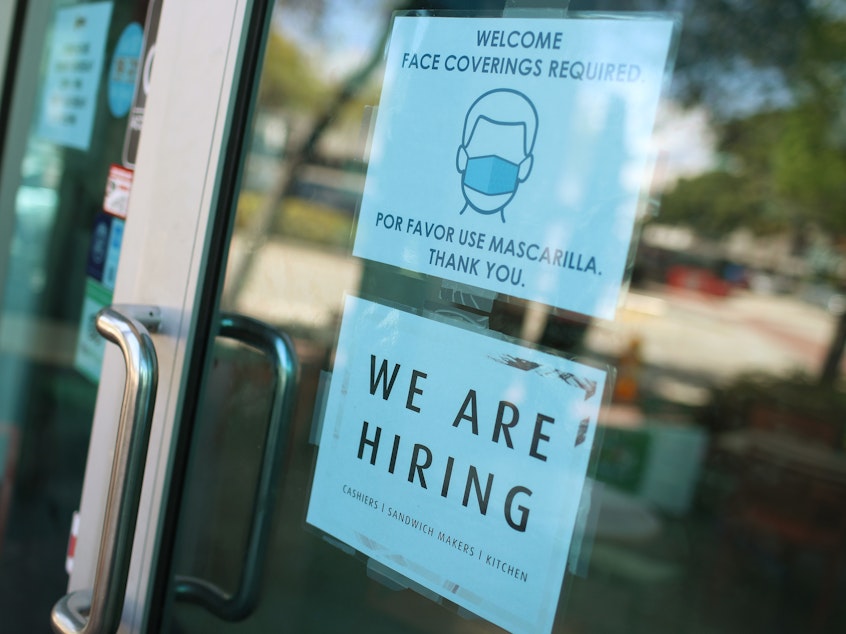Roaring Back: Employers Add 916,000 Jobs As Economy Emerges From Winter Slump

Hiring accelerated last month as U.S. employers added 916,000 workers to their payrolls. It was the largest job gain since August, fueled in part by an improving public health outlook and a new round of $1,400 relief payments.
The unemployment rate dropped to 6%, from 6.2% in February.
Job growth has improved in each of the last three months, after a winter surge of coronavirus infections brought hiring to a standstill in December.
"The labor market recovery has awakened from its winter slump," said Nela Richardson, chief economist at the payroll processor ADP.
Job gains for January and February were also revised upwards.
Sponsored
Over the last year, bars and restaurants have been particularly sensitive to the ups and downs of the pandemic. Those businesses added 176,000 workers in March.
"The weather is getting better. People want to get out. They're enjoying themselves more than they did before," said Ray Sandza, vice president of data and analytics for Homebase, which provides payroll software to restaurants and others small businesses. "Businesses can see the corner rounding, so they're willing to bring more people on."
Construction companies added 110,000 workers in March after a slowdown in February when winter storms blanketed much of the country. Schools and colleges added 190,000 workers, as in-person education gradually resumed.
Forecasters expect the job gains to continue, provided a recent uptick in coronavirus cases doesn't erupt into a full-blown wave.
"It's just very important that we continue to be diligent when it comes to public health, so that we don't have to risk either lockdowns again, or frankly just people being scared to go outside," Sandza said.
Sponsored
Coronavirus vaccinations have ramped up rapidly, with an average of 2.9 million shots given daily over the last week. But new infections are also climbing again, after falling sharply in February and early March.
"It's almost like a race to try to get the maximum number of people vaccinated before the virus has a chance to mutate into something that we can't handle," said Raphael Bostic, president of the Federal Reserve Bank of Atlanta.
Despite the solid job gains in March, Bostic said the U.S. is a long way from full employment. There are still 8.4 million fewer payroll jobs in the U.S. now than there were before the coronavirus took hold a year ago.
"Even at a million [additional] jobs a month — which would be an incredible number — we're still looking at least into 2022 before we get to pre-pandemic levels," Bostic said during a presentation to the World Affairs Council of Atlanta Tuesday. "We've still got a ways to go on the employment front before I think we'll be in a position to really exhale and let the marketplace play out as it will."
New claims for unemployment unexpectedly rose last week, with 719,000 people applying for state benefits, and another 237,000 seeking help under a federal program for gig workers and the self-employed.
Sponsored
Manufacturing has recovered more quickly from the pandemic than businesses that rely on in-person services. Factories added 53,000 workers last month.
A survey of factory managers in March found some of the strongest business conditions in decades, putting a strain on parts suppliers and delivery networks.
"That's simply because demand is so great," said Tim Fiore, who compiles the survey for the Institute for Supply Management. "They're great headaches to have."
Factories report rising prices for steel, plastic and other raw materials, which ultimately may be passed on to consumers.
"If demand is not relaxing, people are going to have to pay whatever it costs," Fiore said.
Sponsored
The Federal Reserve expects overall consumer prices to climb by 2.4% this year, but says that jump in inflation is likely to be temporary. [Copyright 2021 NPR]



